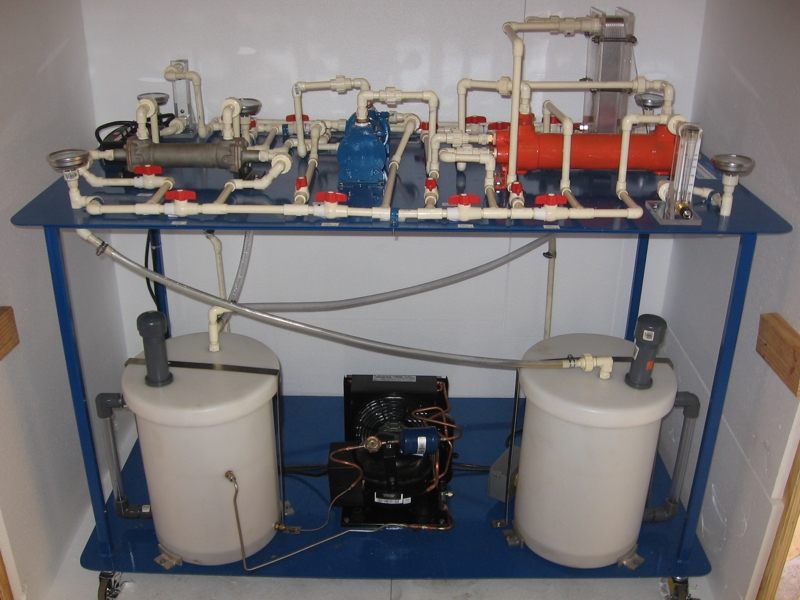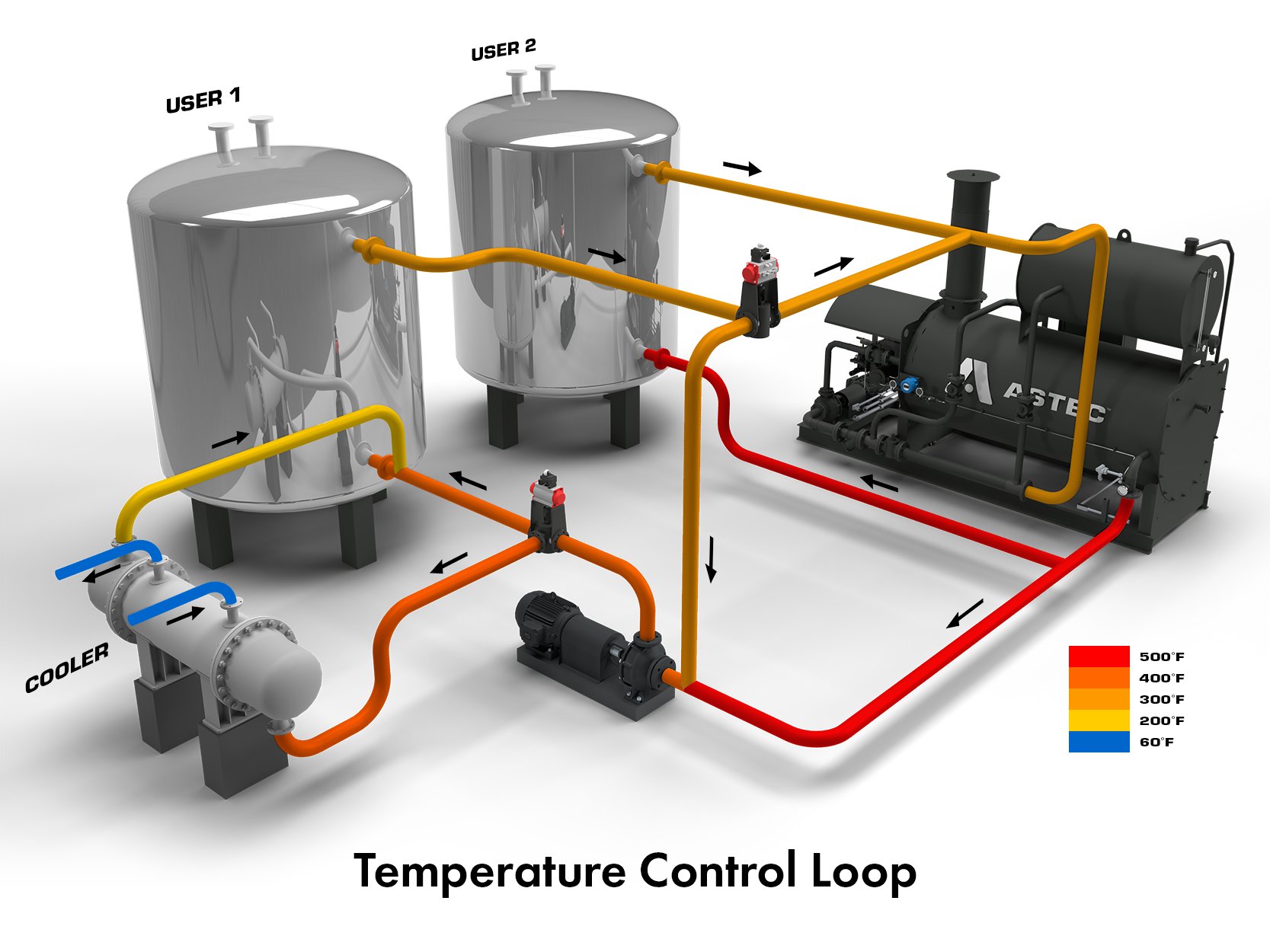Live Data Feedback: How DVS Heat Transfer Systems Enable Predictive Maintenance
Wiki Article
The Duty of Heat Transfer Solutions in Sustainable Energy Solutions for the Future
Heat transfer systems are crucial in the pursuit for sustainable power services. They maximize thermal power monitoring, boosting the efficiency of eco-friendly innovations. By employing devices like conduction, convection, and radiation, these systems minimize power losses. Their function in solar thermal and geothermal applications is specifically considerable. As developments emerge, the capacity for additional advancements raises vital inquiries about future energy strategies. What growths will form the landscape of lasting energy?Understanding Heat Transfer Equipments

The Value of Thermal Power Management
Effective thermal power management is important for maximizing energy efficiency and minimizing waste in different systems. By controling temperature and enhancing Heat transfer processes, organizations can significantly reduce power intake and operational costs. Effective monitoring involves the application of sophisticated modern technologies and practices that check and control thermal problems within systems, ensuring that energy sources are made use of efficiently. Additionally, correct thermal energy monitoring adds to minimizing greenhouse gas emissions, aligning with global sustainability objectives. It also enhances system dependability and efficiency, bring about boosted item high quality and longer devices life expectancy. Ultimately, prioritizing thermal energy monitoring is a crucial step in the direction of producing extra sustainable power solutions and cultivating a responsible technique to power consumption in domestic and commercial contexts.Applications of Heat Transfer in Renewable Resource
While numerous renewable resource resources promise sustainability, the reliable application of Heat transfer plays a necessary function in their efficiency. In wind energy systems, Heat transfer is made use of for turbine part cooling, improving performance and longevity. Geothermal energy relies upon effective Heat exchange in between the planet's subsurface and the fluid distributing in the system, making the most of energy extraction. Biomass energy procedures likewise gain from Heat transfer, as it aids in transforming organic products into functional fuel with pyrolysis and gasification. Additionally, in hydropower, maintaining perfect temperatures in tanks can boost energy outcome. Each of these applications shows the vital significance of Heat transfer systems in enhancing renewable resource modern technologies, inevitably adding to a more lasting energy future.Enhancing Solar Thermal Power Effectiveness
As solar thermal power systems continue to advance, improving their efficiency has come to be important for taking full advantage of power result. Developments in Heat transfer modern technologies, such as improved thermal storage space materials and innovative Heat exchangers, play a substantial function in enhancing efficiency. By utilizing advanced materials that have premium thermal conductivity, systems can capture and transfer Heat more effectively. Additionally, incorporating radar that comply with the sunlight's path guarantees that enthusiasts get optimal solar exposure throughout the day. Utilizing nanotechnology in solar absorbers can better enhance power absorption prices. Including automated control systems helps manage temperature levels and take care of energy distribution efficiently, leading to reduced losses and improved general system performance. These enhancements lead the way for even more sustainable solar thermal power remedies in the future.Geothermal Home Heating: A Lasting Service
Geothermal heating offers a sensible alternative for sustainable energy, offering substantial ecological benefits through reduced greenhouse gas discharges. Its effectiveness and cost-effectiveness make it an attractive alternative to typical home heating systems. Nonetheless, difficulties connected to execution has to be dealt with to maximize its potential influence.Environmental Advantages of Geothermal
Typical heating techniques add considerably to greenhouse gas emissions, geothermal heating offers an engaging choice that minimizes environmental influence. By utilizing the Planet's internal Heat, geothermal systems use an eco-friendly energy source, considerably minimizing dependence on fossil fuels. This method creates minimal carbon exhausts, making it a cleaner choice for industrial and property home heating. Furthermore, geothermal systems advertise energy performance, as they require less energy compared to traditional furnace. DVS Heat Transfer Systems. The use of geothermal power additionally aids in minimizing air contamination, improving neighborhood air top quality and public wellness. As a lasting service, geothermal heating supports climate modification reduction efforts, positioning itself as an important component in the shift towards a greener futureEfficiency and Cost-Effectiveness
How does geothermal home heating gauge up in regards to performance and cost-effectiveness contrasted to typical heating unit? Geothermal home heating demonstrates remarkable effectiveness, typically achieving a coefficient of efficiency (COP) of 3 to 5, indicating it produces 3 to 5 systems of Heat for every single device of electrical energy taken in. This effectiveness equates into reduced operating prices, particularly in regions with secure geothermal sources. Preliminary installment costs can be more than traditional systems; nevertheless, long-term cost savings on energy expenses and lowered maintenance expenses can offset these ahead of time investments. Additionally, many federal governments incentivize geothermal systems via refunds and tax obligation credit scores, enhancing their cost-effectiveness. In general, geothermal heating becomes a economically sensible and lasting alternative to even more traditional home heating solutions.Execution Difficulties and Solutions
Various challenges can restrain the extensive implementation of geothermal home heating systems, in spite of their clear benefits as a lasting energy option. High first installment prices commonly discourage financiers and property owners, making financing a significant barrier. In addition, the geographical constraints of suitable geothermal sites limit availability in specific areas. Local policies and allowing procedures can also make complex task growth, resulting in delays. In addition, public awareness and understanding of geothermal systems remain low, impeding approval. To attend to these obstacles, targeted education projects check here can improve public understanding, while federal government motivations can reduce financial concerns. Working together with local authorities to enhance regulations may facilitate smoother project approvals, eventually promoting the adoption of geothermal heating as a practical, sustainable power choice.Advancements in Heat Transfer Technologies
Developments in Heat transfer technologies play a vital role in enhancing power effectiveness and sustainability. Advanced Heat exchangers and phase modification products go to the leading edge of these developments, offering substantial renovations in thermal monitoring. These modern technologies not just enhance energy use however also add to lowering ecological impact in various applications.Advanced Heat Exchangers
Advanced Heat exchangers play a vital function in enhancing energy performance throughout numerous applications in sustainable power services. These gadgets promote the transfer of Heat between 2 or even more liquids, substantially minimizing energy intake in processes such as commercial home heating, cooling, and power generation. Technologies in materials and layout, such as making use of nanofluids and portable setups, have led to boosted thermal efficiency and decreased size requirements. In addition, developments in electronic monitoring and control systems enable enhanced procedure, more boosting effectiveness. By lessening waste Heat and making the most of power recuperation, advanced Heat exchangers add to reduce carbon impacts and support the change toward Get the facts ecologically pleasant innovations. Their proceeded advancement is essential for achieving worldwide power sustainability objectives.
Stage Adjustment Materials
The integration of stage modification products (PCMs) right into Heat transfer technologies represents a substantial development in energy administration and performance. PCMs soak up and release thermal power during their phase changes, making it possible for effective temperature level policy in structure products and energy systems. By storing excess Heat during top periods and releasing it when demand boosts, PCMs contribute to pack moving and power conservation - DVS Heat Transfer Systems. This ability boosts the performance of renewable resource systems, especially in solar thermal applications. Furthermore, PCMs can improve the thermal convenience of indoor settings, minimizing dependence on traditional heating and cooling approaches. As developments in PCM solutions remain to emerge, their duty in lasting power remedies is positioned to expand, using appealing opportunities for future research study and application
Future Prospects for Heat Transfer in Lasting Energy
As the demand for sustainable energy remedies remains to increase, the function of official statement Heat transfer systems is ending up being significantly vital in forming future technologies. Developments in designs and materials are anticipated to improve performance in Heat transfer, lowering power losses in numerous applications. The integration of innovative thermal storage systems, such as stage adjustment products and thermochemical storage, will certainly make it possible for far better monitoring of power sources. Study right into nanofluids and biomimetic Heat exchangers might better enhance thermal efficiency. The adoption of smart innovations will enable for real-time monitoring and adaptive control of Heat transfer procedures. These improvements are poised to greatly add to the overall effectiveness and sustainability of energy systems, leading the way for a much more energy-efficient future.Frequently Asked Questions
Just How Can People Carry Out Heat Transfer Equipment in your home?

Individuals can carry out Heat transfer systems in your home by setting up energy-efficient devices, making use of radiant heat, and optimizing insulation. These measures boost power performance, minimize costs, and advertise lasting practices in household atmospheres.

What Are the Costs Connected With Mounting Heat Transfer Solutions?
The expenses linked with installing Heat transfer systems differ commonly, normally encompassing equipment, installment labor, and upkeep. Aspects such as system type, home size, and regional guidelines substantially affect the total expense involved.Are There Government Incentives for Heat Transfer System Installations?
Federal government motivations for Heat transfer system setups vary by area and can consist of tax obligation discounts, credit scores, and gives. These monetary advantages intend to motivate adoption, inevitably promoting energy performance and decreasing ecological effect within areas.Exactly How Do Heat Transfer Solutions Impact Power Bills?
Heat transfer systems notably affect energy expenses by maximizing energy efficiency. By boosting the transfer of Heat, these systems decrease power intake, bring about lower utility prices and developing an extra lasting strategy to energy monitoring.What Upkeep Is Required for Heat Transfer Systems?
Upkeep for Heat transfer systems includes regular assessments, cleaning of elements, examining fluid levels, making sure correct insulation, and replacing used components. These tasks assist keep effectiveness, prevent failures, and prolong the system's operational life expectancy.These systems facilitate the activity of thermal energy from one tool to one more, making it possible for the transfer of Heat for air conditioning, power, or home heating generation purposes. Geothermal energy depends on efficient Heat exchange between the planet's subsurface and the liquid circulating in the system, making best use of power removal. In addition, geothermal systems advertise energy efficiency, as they need less power contrasted to conventional heating systems. Advanced Heat exchangers play a vital role in enhancing energy effectiveness across different applications in sustainable energy services. Heat transfer systems significantly affect energy expenses by enhancing energy efficiency.
Report this wiki page